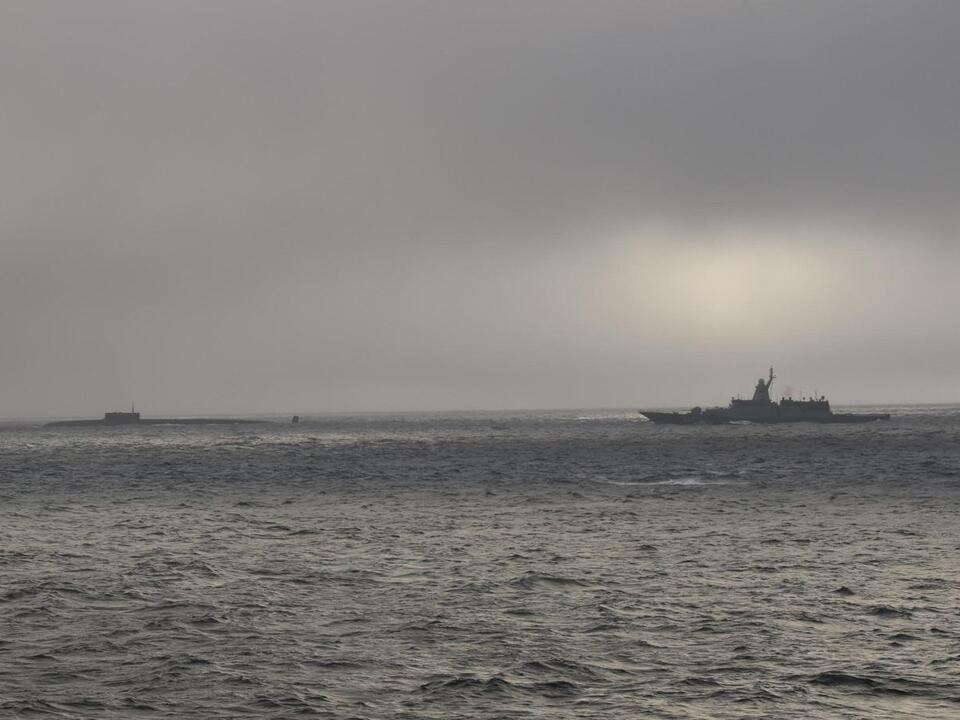Physical Address
304 North Cardinal St.
Dorchester Center, MA 02124
Physical Address
304 North Cardinal St.
Dorchester Center, MA 02124

On Monday, the U.S. Coast Guard reported monitoring a flotilla of Russian naval vessels, which included two submarines, as they entered U.S. waters off the coast of Alaska. This movement seems to have been an attempt to maneuver around sea ice, a practice that aligns with international maritime regulations.
The U.S. Coast Guard Cutter Stratton observed the Russian military ships crossing the maritime boundary and venturing approximately 30 miles into the U.S. Exclusive Economic Zone, an area that extends beyond U.S. territorial waters. This interaction occurred nearly 60 miles northwest of Point Hope, Alaska.
According to Rear Adm. Megan Dean, “We are actively patrolling our maritime border in the Bering Sea, Bering Strait, and Chukchi Sea, with our largest and most capable cutters and aircraft, to protect U.S. sovereign interests, U.S. fish stocks, and to promote international maritime norms.” She assured that the Cutter Stratton successfully prevented any disruptions to U.S. interests during this encounter.
The Coast Guard stated that the Stratton, a 418-foot legend class national security cutter, is currently patrolling as part of Operation Frontier Sentinel. This operation has been designed to ensure a U.S. presence whenever strategic competitors are active near U.S. waters.
This incident is not isolated; similar encounters have taken place in recent months. Last month, a U.S. Coast Guard cutter on a routine patrol around the Aleutian Islands spotted a Russian ship operating in international waters but within the U.S. Exclusive Economic Zone.
On July 6, while patrolling north of Amchitka Pass in the Aleutian Islands, Coast Guard aircraft detected four Chinese military vessels also operating in international waters but again within the U.S. Exclusive Economic Zone, U.S. officials reported.
Additionally, on July 24, two Russian bombers and two Chinese bombers were intercepted by U.S. and Canadian fighter jets while flying together in the Alaska Air Defense Identification Zone. North American Aerospace Defense Command (NORAD) evaluated the bombers as not posing a direct threat. However, a defense official noted this was the first instance of Russian and Chinese aircraft flying in unison into the Alaska ADIZ, illustrating an evolving military collaboration that raised alarms for U.S. defense officials, including Secretary Lloyd Austin.
It is important to understand that while the Alaska ADIZ is recognized as international airspace, it functions as a zone needing the identification of all aircraft for national security reasons. The area signifies the boundary where U.S. airspace ends.
Military engagements involving the U.S., Canada, Russia, and China have escalated notably in the Arctic region. For instance, in July, the Russian military responded to the approach of two U.S. long-range bombers by scrambling fighter jets over the Barents Sea as tensions rise in the region.
The recent movements and military interactions underscore the increasing complexity of geopolitical dynamics in the Arctic, where nations are vying for influence and strategic advantage. The U.S. Coast Guard’s vigilant patrols reflect a proactive approach to safeguarding U.S. interests in an area where international practices and military posturing continue to evolve.
Source: CBS News



